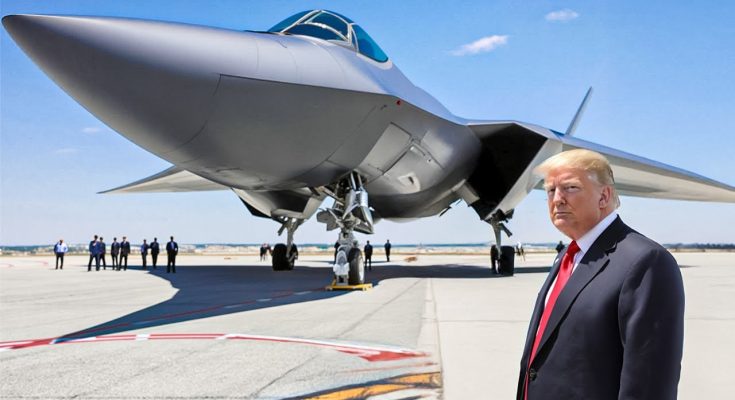The concept of a “6th Generation Fighter Jet” is the subject of intense speculation and strategic importance for the U.S. military, especially as the world looks toward the future of air superiority. The Next Generation Air Dominance (NGAD) program, which is a key part of the U.S. Air Force’s long-term vision, is seen as a revolutionary leap in fighter jet technology. While details remain classified, the buzz around a 2025 NGAD prototype, particularly with President Donald Trump’s administration, has sparked conversations about its potential.
Trump’s focus on military strength and national defense modernization throughout his presidency included advancements in cutting-edge technologies, with the NGAD program being one of the most anticipated. According to reports, the 6th generation fighter would surpass the capabilities of current aircraft, such as the F-22 Raptor and the F-35 Lightning II, by incorporating a range of advanced features.
One of the most anticipated aspects of the NGAD fighter is the introduction of stealth technology that would be nearly undetectable by enemy radar systems. The 6th Generation Fighter would likely push stealth further, using advanced materials and design to reduce radar signatures even at higher speeds. Its stealth features could be further complemented by an artificial intelligence (AI) system capable of adaptive decision-making, potentially allowing the aircraft to autonomously assess threats and adjust tactics in real-time. This AI-driven autonomy is expected to enhance both survivability and mission effectiveness in complex combat environments.
Moreover, the jet’s speed and maneuverability are expected to reach new heights, with rumors suggesting that it will include hypersonic capabilities, allowing it to fly at speeds greater than Mach 5. This would enable rapid response times in a variety of combat scenarios. Additionally, the 6th generation fighter is expected to have integrated weapon systems that allow for quicker, more precise strikes on targets, potentially with laser or directed-energy weapons, which are seen as the future of air-to-air and air-to-ground combat.
The fighter jet will also likely feature advanced sensor fusion technology, meaning it can collect and analyze data from multiple sources—airborne, space-based, and ground-based. This fusion will allow the jet to stay one step ahead of adversaries, positioning it as a superior force in the skies. The integration of these sensors with the AI system will likely provide superior situational awareness, making the pilot’s role more focused on strategic decision-making rather than tactical actions.
Unmanned capabilities are also a hot topic. While it’s unlikely that the 6th Generation Fighter will be fully unmanned, reports suggest it might come with the ability to operate as a manned-unmanned team, wherein a manned aircraft could control a fleet of drone fighters during a mission. This approach allows for greater operational flexibility and the ability to saturate the enemy with more targets.
While the 2025 timeline is speculative, the U.S. is aggressively pursuing NGAD technology, and it’s clear that the 6th Generation Fighter Jet will revolutionize aerial warfare. Whether under Trump’s administration or future leadership, the development of such a jet promises to maintain U.S. air dominance for decades to come, countering emerging threats from global competitors like China and Russia. The world is watching closely as these technological advancements take shape, and the potential unveiling of this game-changing aircraft could mark a new era in military aviation.



